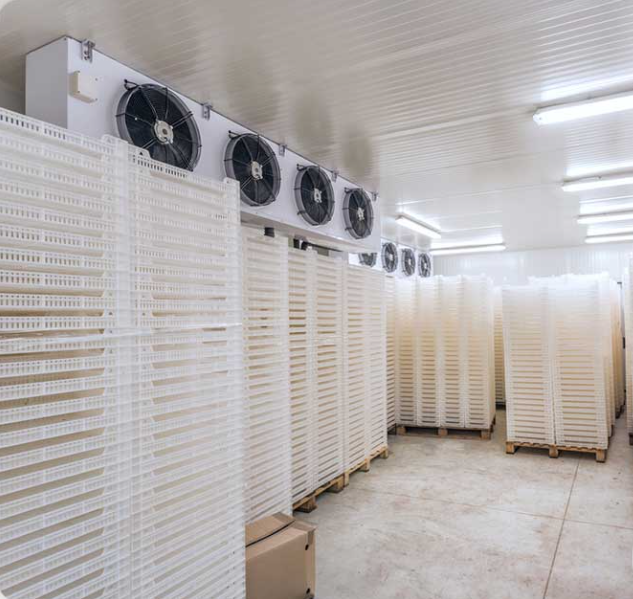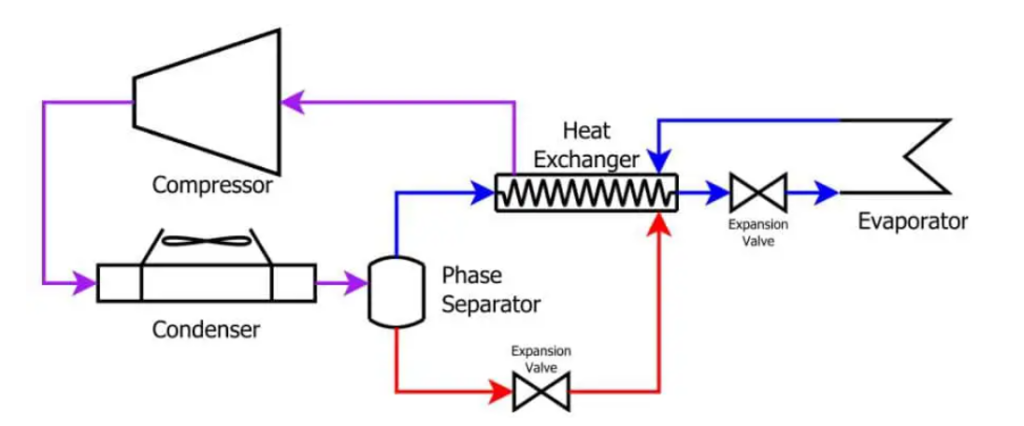Major Elements of Refrigeration Systems and Their Functions
Refrigeration systems are complex and use many components that work together to cool and maintain the temperature of a space or object. The major elements of a refrigeration system include compressors, condensers, evaporators, expansion valves, and an optional accumulator.
Each element has its own purpose in cooling down and maintaining temperatures within the system. Here is a description of each element and its function within the system.
1. Compressors
Compressors are the heart of refrigeration systems. They compress and circulate refrigerant gas, which is then sent to the condenser and evaporator coils. Compressors come in various types and sizes to suit different cooling needs such as reciprocating, rotary, centrifugal, scroll, or screw compressors.
Depending on the type and size of compressor, different amounts of refrigerant can be circulated through a system at any given time.
Compressors are typically powered by electricity and use pressure to move the refrigerant gas throughout the system. The amount of power it uses is determined by how much refrigerant is being compressed, but in general, compressors use a lot of energy.
2. Condenser coils
The condenser coils are the second major element of a refrigeration system. The condenser works to dissipate heat from the refrigerant gas, which in turn cools it down and turns it into liquid form. It does this by transferring heat from the refrigerant gas to the surrounding air.
The condenser coils are usually made of copper or aluminium and are designed to maximize heat transfer from the refrigerant gas to the outside atmosphere. This is typically done by using a fan or blower to move air over the condenser coils, thus increasing their effectiveness in dissipating heat.
3. Evaporator coils
The evaporator coils are the third major element of a refrigeration system. The evaporator works to absorb heat from the surroundings and transfer it to the refrigerant gas, which in turn cools down the space or object it is cooling. The evaporator coils are typically made of copper or aluminium and work by evaporating some of the liquid refrigerant into a gas.
The gas then absorbs heat from the surrounding air and is sent back to the compressor to be compressed again, creating a continuous cycle of cooling.
4. Capillary tube
The capillary tube is an optional element that can be used in a refrigeration system. It is a small, thin, metal tube that helps to regulate the flow of refrigerant between the compressor and evaporator coils.
The capillary tube works by reducing the pressure of the refrigerant gas as it travels through it, which causes it to cool down and evaporate. This helps to maintain a steady flow of refrigerant gas in the system and prevents it from flooding or running low.
5. Expansion valves
Expansion valves are used in refrigeration systems to regulate the flow of refrigerant between the evaporator and condenser coils. The expansion valve acts as a “throttle” and can be adjusted to increase or decrease the amount of refrigerant that flows through the system.
The expansion valve also helps maintain pressure within the system, which is necessary for efficient cooling. With quality Samsung fridge parts, the expansion valve can be kept in perfect working order and help to ensure optimal efficiency.
6. Optional accumulator
An optional element of a refrigeration system is an accumulator. The accumulator works by collecting any remaining liquid refrigerant that is not evaporated into a gas by the system. This helps to prevent the refrigerant from entering and damaging the compressor, which could lead to costly repairs or even replacement of the unit.
The accumulator also serves as an additional filter for any dirt or debris that may be present in the system. For this reason, it is recommended to install an accumulator in any refrigeration system for optimal performance.
How does the refrigeration system works?
Finally, the refrigeration system works by circulating a refrigerant gas through its components. The compressor compresses and circulates the refrigerant gas to the condenser, where it is cooled into liquid oxygen.
The liquid then travels to the evaporator, where it absorbs heat from its surroundings before being compressed again and circulated back to the condenser. This continuous cycle of cooling is what allows a refrigeration system to cool down a space or object.
The expansion valve is used to regulate the amount of refrigerant that flows through the system, while the optional accumulator helps keep the system clean and prevents damage to the compressor. With these components working together, a refrigeration system can effectively and efficiently cool down any space or object.
Conclusion
These are the major elements of a refrigeration system and their functions. Each element works together to cool and maintain temperatures within the system, ensuring that whatever the application may be, cooling will take place efficiently and effectively. With proper maintenance and regular inspections, refrigerators will continue to provide cool temperatures for years to come.


2 thoughts on “Major Elements of Refrigeration Systems and Their Functions”